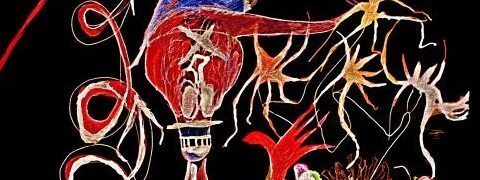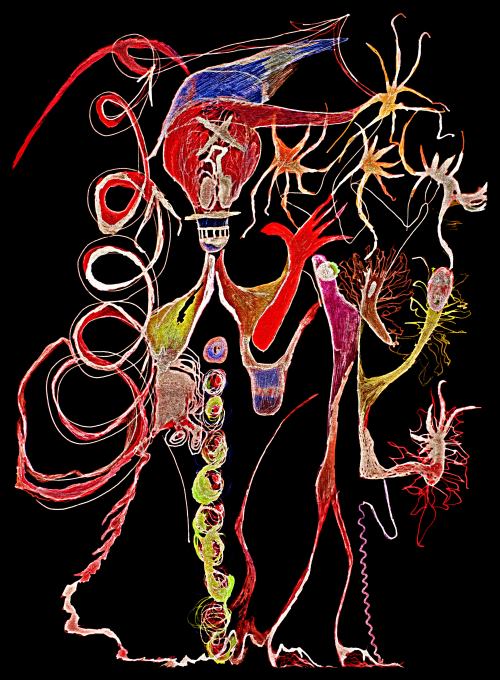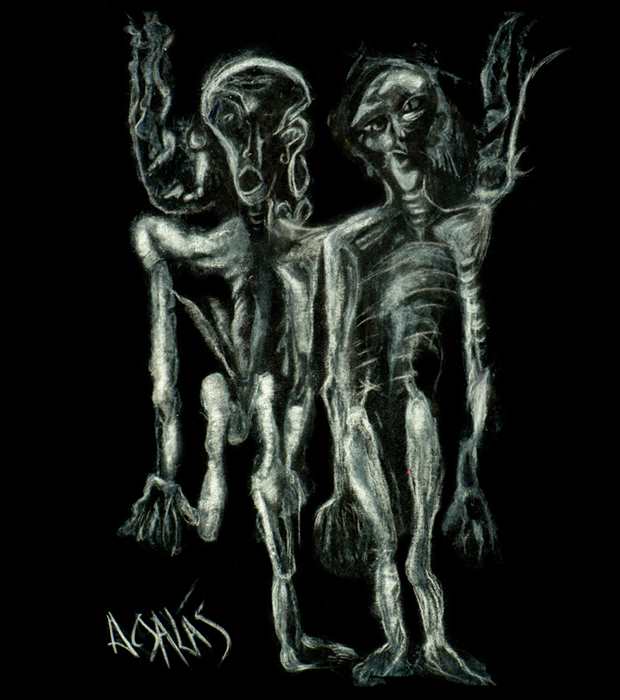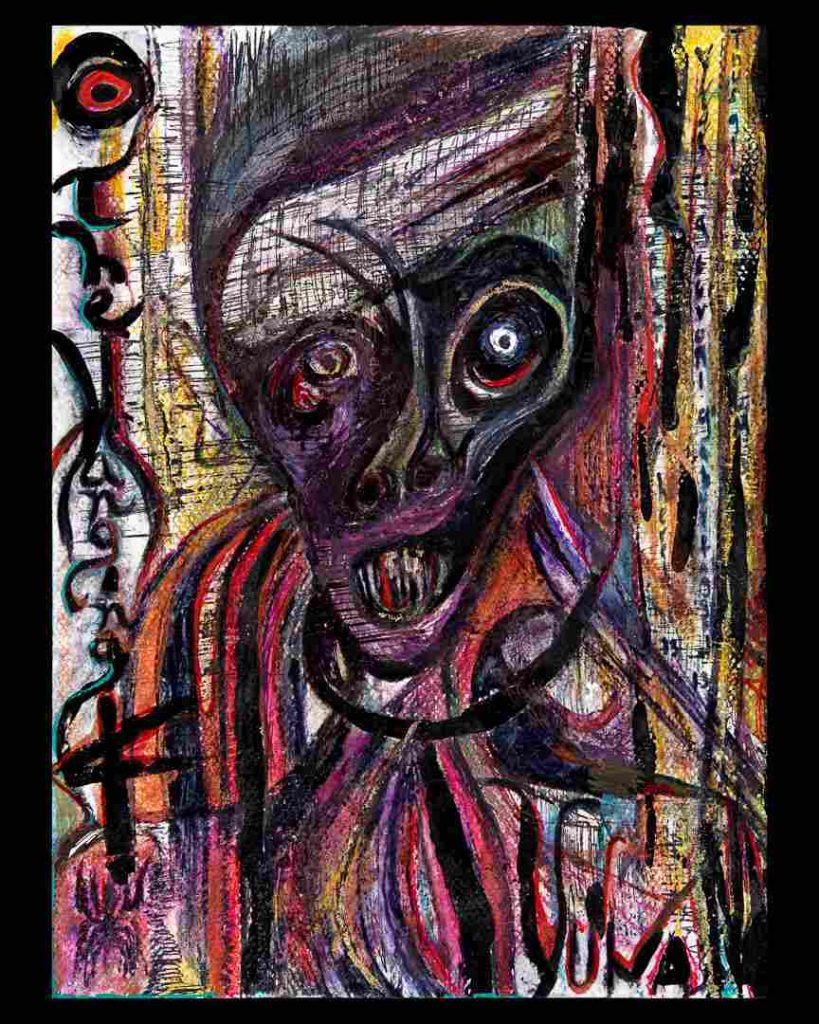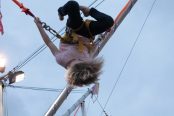[dropcap style=”font-size:100px; color:#992211;”]T[/dropcap]he outsider visual art of Diamanda Galás
Singer, composer, writer and artist Diamanda Galás is captivating in every possible way, but scares the hell out of me. And I know I’m not the only one.
But such is the whole point of her oeuvre and why she is so endlessly fascinating in whichever musical genre (and now visual art media) she chooses.
From early works Wild Women with Steak Knives, The Litanies of Satan and Plague Mass, to her most recent Will and Testament, Defixiones, Orders from the Dead, and Das Fieberspital, her voice is white phosphorus that screams as it burns.
A pioneer in street-theatre and AIDS activism long before it became a mainstream cause, Galás captured her personal grief in the powerful, disturbing Plague Mass, and focused on the suffering of political prisoners, exiles, victims of genocide, the mentally ill, and others of the marginalized. Her performances have been compared to spiritual experiences; a scouring of the soul, a Janovian primal scream therapy by proxy that leaves audiences shaken and exhausted.
The early Litanies of Satan usually prompts a litany of malevolent adjectives (devil woman, witch, demonic, etc.) when describing her. A shame, because it misses so many nuances of her work and personality. The genuine Diamanda Galás oeuvre is diverse and includes singing Gospel like an avenging angel, Greek Rembetika, and the intensely affecting avant-garde vocal in Schrei (with David Pepe). Galás has rocked out with John Paul Jones, and movingly interpreted standards as disparate as “I Put A Spell On You,” “Dark End of the Street,” and “I’m So Lonesome I Could Cry.”
More apt a description is the image of a Fury or a righteous Valkyrie out to flay her enemies and excoriate hypocrisy. Hell yes, she is a force of nature. However, she also has a sense of humor and a charming laugh, as well as a morbid spark of joyfulness that those who deny the darker corners of the psyche just never seem to have.
Her visual art (sometimes likened to Edvard Munch, Paul Klee, and Jean Dubuffet) is as confrontational and eerily beautiful as her music, utilizing watercolors, acrylics, nail polish, pencil, ink, chalk, and glitter. It is, appropriately, as twisted, horrifying, brutal, and tantalizing as you would expect, but is also amusing. Her performances and self-representation have always been meticulously staged and crafted to achieve the right disconcerting vibe, literally down to her eyebrows. So is a painting like ‘Los Infideles’ (2012) or ‘The Devil’ (2013) designed to freak you completely out, directly through your complacent eyeballs? Oh, yes, please.
Galás was kind enough to answer a few questions about her artwork recently for Trebuchet.
How long have you been practicing visual art as well as music? Are there emotions or experiences that you prefer to express visually?
Diamanda Galás: In my large music works, I compose based upon my emotional reaction to an event or paradigm (a rat running through a maze that has no escape). If my reaction is strong enough, and I feel that insufficient attention has been called to a subject matter, then it becomes a small joy to extrovert what I know to be true and to be hidden – to the public.
Pre-performance interviews are often another medium through which the work is expressed, as these can be used as opportunities to cut through disinformation and historical revisionism.
In other pieces, the work may recall the state of isolation, which is common to all of my performance works. How does one exist this way?
I will probably always do the visual work; this comes and goes like my interest in several kinds of vocal music. But the difference between visual media I create and sound material is the athletic demand put on my work. I may not be out of training for the sound work.
Ever.
What or who inspires you to paint and draw?
Diamanda Galás: The visual art I do has the same impulse and subject material. I cannot escape from the subjects I treat, so these are simply different treatments of similar subjects. Sometimes the visual work is actually funny, and I enjoy that.
I would say that some of my songs have a comic bent, although not many. The album (The Sporting Life) with John Paul Jones amused us both a great deal, however. I remember with great fondness, his laugh.
More of Diamanda’s work can be seen and purchased here and here.

